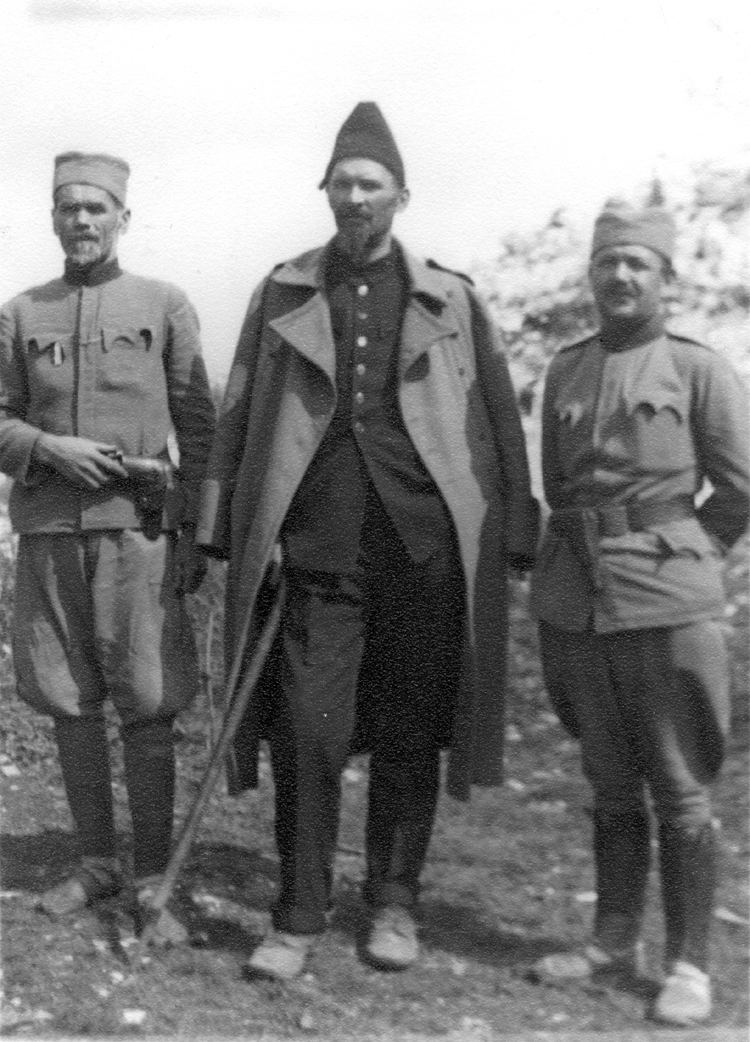Native name Baјo Stanishiћ Years of service 1907–43 | Rank Colonel Name Bajo Stanisic | |
 | ||
Allegiance Montenegro (1907–18) Kingdom of Yugoslavia (1918–41) Yugoslav Communists (1941) Chetniks (1941–43) Italy (1942–43) Battles/wars World War II in Yugoslavia:June uprising in eastern Herzegovina (1941)Uprising in MontenegroCase White | ||
Bajo Stanišić (1890–1943) was a Montenegrin Serb officer of the Royal Yugoslav Army who was one of the leaders of the World War II Uprising in Montenegro against the Italian occupation forces. After the suppression of the uprising, he became one of the commanders of the Chetnik units in Montenegro.
Contents
Uprising in Montenegro
Stanišić was a member of the Supreme Command of the insurgent forces during the Uprising in Montenegro.
Anti-communist struggle and collaboration with the Italians
On 11 February 1942, after the uprising had been suppressed, Stanišić conducted a coup near Danilovgrad. On that occasion, two companies from the "Bijeli Pavle" detachment joined him. Later that month, he established the National Army of Montenegro and Herzegovina (Serbian: Народна војска Црне Горе и Херцеговина) comprising six battalions, most of which were Chetniks, and appointed himself as their commander. On 17 February and 6 March 1942, Stanišić concluded collaboration agreements with the Italian military governor, Alessandro Pirzio Biroli.
Stanišić commanded the Zeta Chetnik Detachment, and according to his agreement with the Italians, his detachment was responsible for the territories of Nikšić, Danilovgrad and Podgorica. Stanišić wanted to negotiate with Partisans but Ivan Milutinović, a commander of the Partisan forces in Montenegro, did not reply to Stanišić's offer. Shortly before his death, Stanišić proposed that Draža Mihailović soften his position toward the separatist "Greens" in Montenegro.
Death
In mid October 1943, General Đukanović and Stanišić with 25 of their soldiers were located at their headquarters in the Ostrog Monastery. They were besieged by stronger Partisan units who demanded that they surrender, otherwise the Partisans threatened to destroy the monastery and kill them all. To protect the monastery and their lives, General Đukanović and 22 soldiers surrendered, but Stanišić and three of his relatives decided not to surrender. Stanišić was shot dead by the Partisans, while Stanišić's relatives committed suicide.
General Đukanović and his soldiers who surrendered to the Partisans were executed on the same day. They were buried in two mass graves. In 1948, the communists built pit toilets above the graves of Đukanović and his Chetniks for the use of workers who built a railway from Nikšić to Podgorica.
Stanišić was buried in Ostrog, below the Upper Monastery. On 20 October 1945, the Yugoslav authorities excavated his bones and threw them into sinkholes around the monastery. The monks collected his bones and secretly buried them in a grave below the Upper Monastery.
Legacy
The killing of Bajo Stanišić and Blažo Đukanović is commemorated in a song the Victory below Ostrog (Serbian: Побједа под Острогом).
